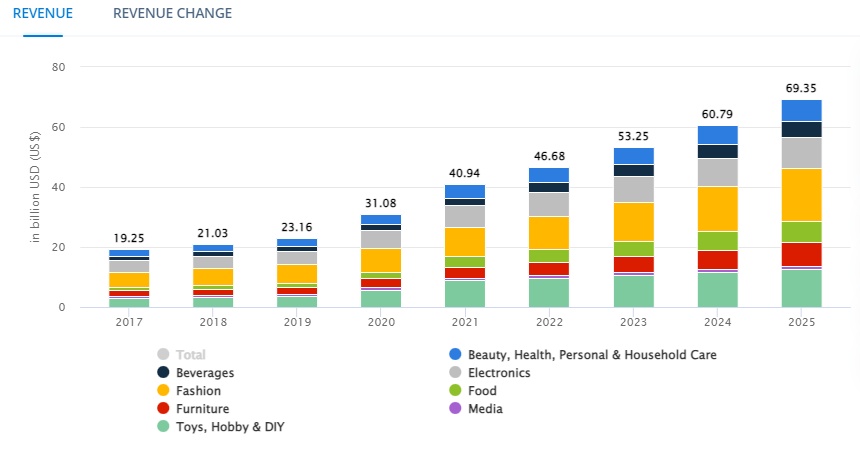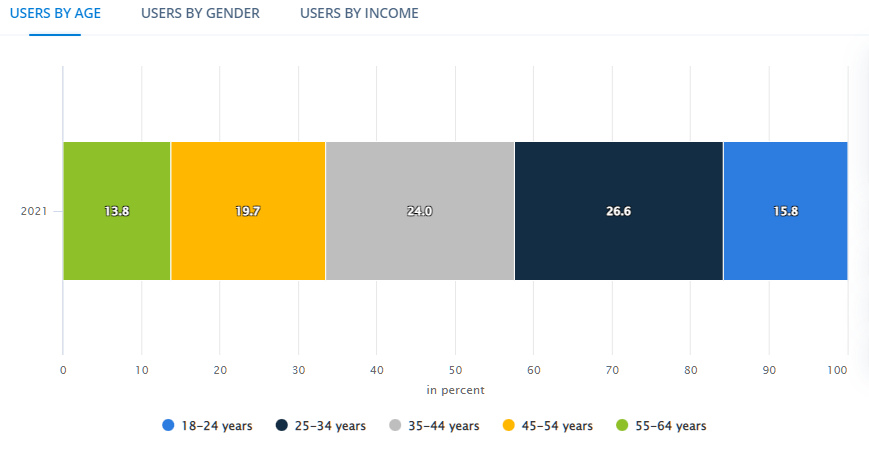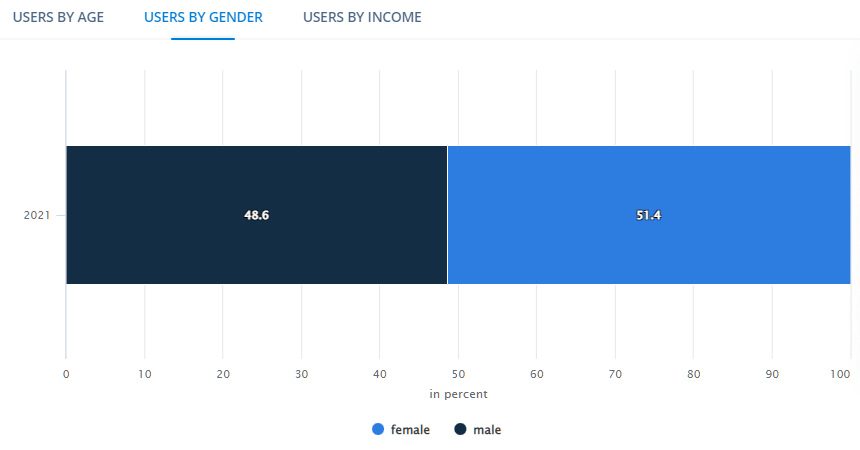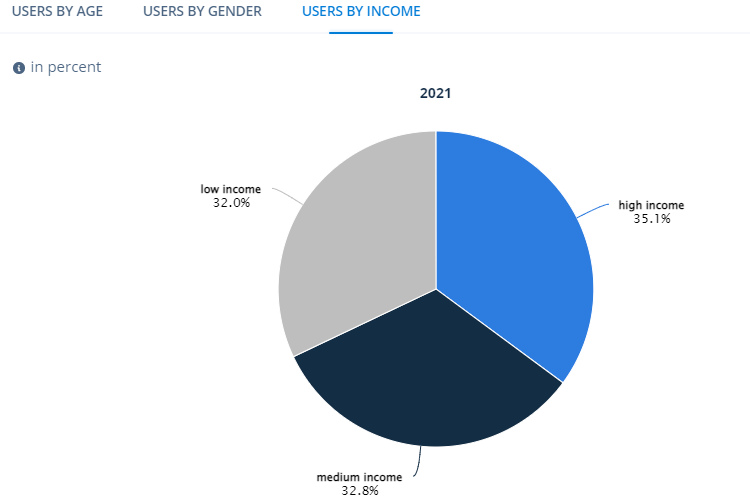
The Ultimate Guide to Building a Successful Australian Ecommerce Strategy
14 minutes read
When anyone uses the phrase in digital marketing of "the good old days" those tend not to be too long ago. Let's take a decade ago when online consumerism was still relatively in its infancy. You created your website, which acted as your shopfront, conducted basic SEO for a relatively short time, and Voila! People found you without considerable time spent deliberating an Australian eCommerce strategy.
In today's digital marketing, that's the equivalent of selling a table full of goods on the high street. Ideal if you have plenty of people traffic but of little use to people who don't walk directly past you. Along with a massive shift in internet usage and behavioural patterns during and post-pandemic, online consumerism is at an all-time high in Australia and all Western countries. So it's time to jump on the eCommerce bandwagon with your marketing budget in hand and ride onto success...well, slow down... if only it were that easy.
Before you dive headfirst into eCommerce or try to fix an eCommerce strategy that is not yielding results, it's sometimes good to start at the beginning. Understand what eCommerce is, its worth to your bottom line and how you can maximise your return on each Aussie dollar you invest. And that is what this guide is looking to achieve.
This guide will analyse the Australian landscape and eCommerce strategies. It will help you understand the processes of developing your marketing plan, give you some tips and hints, and look at the benefits and realistic ROI if you implement the right strategy.
Here is what we will be breaking down:
- eCommerce in Australia - The Landscape as it Stands
- eCommerce Statistics in 2022
- Commerce Marketing Benefits
- Commerce in Australia - How it Works
- Developing a Watertight eCommerce Marketing Strategy
- Applying eCommerce Marketing Strategies
- eCommerce Marketing Tips
So let's get into building a successful Australian eCommerce Strategy.
eCommerce in Australia - The Landscape as it Stands
eCommerce in Australia has made rapid recent advancements. Here, we have become a hub for international exports of many products, from wine to frozen bovine meat, iron ore and more. The experience of dealing on the international export stage has helped develop the internal eCommerce infrastructure we benefit from today.
Many thought internet usages would return to pre-pandemic levels. However, the opposite has happened and the global projections which Australia follow almost identically looks to be a powerful industry in the very near future. As you will see from the chart below, eCommerce and consumers have become a motorcycle and sidecar on a journey upwards between now and 2025.

eCommerce Statistics in 2022
Couresy of Statista here are Australian eCommerce industry pointers for 2022. Click on the link to see further statistics of compiled as of June 2022.



There is a lot to read between the lines here for eCommerce businesses in Australia.
One of the most comforting statistics that Statista have presented is the fact that low, medium and high income brackets all have similar online purchase patterns. So if your product(s) or service(s) are well-priced you stand a chance at garnering attention from every income bracket in Australia.
eCommerce Marketing Benefits
The question on all business owner's lips is - What are the benefits of eCommerce?
Although each eCommerce strategy is different, even for businesses in the same industry, let's look at what a solid eCommerce marketing strategy will yield.
Open All Hours
Imagine employing staff who worked 24/7; wouldn't that be a luxury! For the consumer, shopping has never been more convenient. From a mobile phone, while sitting on a bus to the comfort of their home in the evening, your audience is never more than a click away. Your eCommerce platform is not there just to sell anymore. You want it to be a lead-generating machine, as it is an ever-present automated marketing channel.
How Google now ranks websites depends on many factors, including your platform being educational, informative and engaging for its users.
If all you have are images with a 20-word description below them and a shopping cart... good luck! Not everyone will buy the first time around. Still, if the website is intriguing and informative, those warm leads have a better chance of becoming customers over time. With so much competition that is only a click away, you need to grab the visitor and hold their hand through the sales funnel to purchase point.
Your marketing spend has to include website and content optimisation. Give Google and the user plenty of information; this is key.
Lead Generation
If you are not set up to sell directly on your website, you can at least gather "warm leads" in the process. These can come in an email enquiry form, asking for a quotation or contacting you by phone.
By analysing online behavioural patterns, which a skilled eCommerce SEO agency in Australia will do, you can structure or tweak your website to create a sales funnel. Here, you can use internal links and call to action (CTAs) to gently nudge the user down the funnel. Your site should answer questions along the way and build confidence to become a genuine lead with interest.
Return on Investment vs Marketing Spend
There is an art in decreasing your overall marketing spending while increasing your ROI. However, this is achievable with a structured eCommerce marketing strategy. As mentioned above, online behavioural patterns have changed considerably over the pandemic, so some other marketing combinations that were working are now declining.
An eCommerce marketing professional will access the industry's top analytical tools and reporting metrics to optimise areas that will reap the rewards.
eCommerce in Australia - How it Works
2022 studies have confirmed that 81% of consumers conduct online research before purchasing. So, for businesses with physical premises, utilising local SEO in conjunction with a website that is laser-focused on the sales funnel can act as a potent duo. Experienced eCommerce marketing specialists know many ways to attract more traffic to your site and ensure your website architecture gives you the best chance of first being indexed by the search engine crawlers and then converting visitors into paying customers.
Getting the right design for your website is crucial. Being mobile-friendly, having excellent load-up speed of all your product images, and a clever interlinked sales funnel are essential to success. Add a well-researched organic SEO strategy on top, and the foundation for long-term growth is laid.
Look at your eCommerce website as the foundation from which all strategies derive. Your headers and meta description initially grab the user; the Homepage then engages them before they even know the full extent of your services and products.
Then the real work begins with keeping them on your website and guiding them towards engagement of any form, whether it be:
- Email Contact
- Downloading Product Information
- Subscribing to your Blog or Monthly Newsletter
- Contacting you Direct
- Using your Shopping Cart to Purchase
Any of the above equates to a 'warm lead' except the final one.
Developing a Watertight eCommerce Marketing Strategy
In this guide, we focus on eCommerce and its benefits. We'll proceed as if you have found a web developer who took care of your hosting and launched your eCommerce website.
Now for the marketing plan.
Set your Goals
Setting marketing objectives sounds obvious, but it is still essential; these should be derived from your business objectives. These can vary from business to business. For example, a large brand may see brand awareness as its main focal point. At the same time, a small start-up business may initially have different objectives.
Typically there are two ways of setting goals.
- Analysing your current trends and stats to look at ways of improvement.
- Look at the industry and its benchmarks and analyse how you can reach industry-standard figures as the first step.
Devising Tactics
After consultation with your business partner (s), team or an eCommerce SEO agency in Australia, you can focus on various activities to help hit your targets.
TIP - Do not try to take on too much at once. Smaller businesses can run out of capital quickly. Pouring marketing resources into too many marketing streams can mean none of them get fully implemented or optimised. So deliberate what to focus on to get ROI and use that as fuel to expand your scope of optimisation and marketing. Quarterly staggering of strategies is an excellent framework to work off with a set budget allocated to each area of focus for that particular quarter.
It is good to note that there are no set timeframes to get traction. Some will take longer than others. Certain campaign angles will be a hit and gain traction quickly, but your social media could take much longer to gather a following that is sharing your information with others.
Analysing Data
Analytics is not for the faint-hearted... or a busy small business owner. However, suppose your Australian eCommerce strategy does not include outsourcing for professional help. In that case, you could look to spend time with Google Analytics.
Here you will find guidance with customer acquisition reports, plus other analytical data to help keep track. Monitoring what sources traffic is coming from is vital. Traffic derived from one source may be plentiful but with low conversion rates, while the opposite could be said of another. Therefore you structure your marketing plan around the highest conversion source.
Suppose you have poured marketing money into Facebook to generate leads and sales, but it is not reaping the rewards. In that case, closer analysis can determine that it might be a lack of engaging content or possibly you are posting special offers at the wrong time of day for your target audience, or simply your message is just not turning heads. In Google Analytics, you can set up reporting to track your progress. The more data you have, the better-informed decision you will make.
Applying eCommerce Marketing Strategies
A solid eCommerce website is a focal point for a successful marketing strategy. Here is where the anticipation starts to build. The creation of social media platforms, content curation and SEO are all the driving forces behind a strategy that should increase online visibility and general brand awareness.
There are many aspects to consider in an overall marketing strategy, and here we list nine of the most effective areas of digital marketing to get right.
Social Media
Social media platforms provide businesses with an excellent opportunity to reach many new people, share and increase a loyal fan and consumer base over time. However, many businesses get their social marketing confused when it comes to supporting an eCommerce marketing push. The timing, use and interaction of posts should be uniform for interaction and conversions, not just substance that doesn't drive a call to action (CTA). Clicks and likes don't necessarily equate to ROI.
A well-planned Australian eCommerce strategy that uses analytical tools will be able to see how users find the page. Then you can determine the trigger point at which people become leads and enter the sales funnel.
Videos and Content
"Shoppable Videos" are a relatively new but increasingly effective marketing tool. In addition to Google ranking for internal links and engagement time on your website or blog, shoppable videos = MONEY!
The food industry is a prime example of this. Online food recipes are gaining in viral popularity. So start to look within your team who can create short but engaging videos to drive traffic and ROI. These videos would cover kitchen equipment specialists, kitchen fit-out companies, food manufacturers, and more in the food industry chain. For example, you promote a particular recipe and place in the video hyperlinks and CTA's to purchase the ingredients to execute the recipe, which your eCommerce site sells.
Influencer Marketing
With the meteoric rise of Instagram, a new niche has been created for marketing - "The Influencer". Millennials and younger follow their favourite celebrities who are paid to promote brands through their online presence, with Instagram and YouTube being the most prominent. As they have, over time, built a loyal following of subscribers that like and trust them, an affiliation with them can gain you instant viral brand recognition. There are usually two ways to do this, either by building a relationship with them directly or using paid sponsorships; either/or it can be highly beneficial.
Content Marketing
Google loves content. Content is one of the significant driving factors in search engine rankings. An eCommerce business needs to, at the start of a marketing campaign, consider the following:
- Blogs
- Articles
- Case Studies
- Infographics with Audio or Video
Blogs and articles will always form your content marketing strategy's spine, and infographics, video, and audio complement it well.
Guest posts are another excellent way of keyword-rich content posted on another website with a clean 'do follow' backlink. If you are unsure about this, consult with an SEO professional. They will explain that if you write informative articles about services and products within your industry or niche posted on another website with high domain authority, Google likes this.
It shows Google that you have authority within your field and can be helpful to their users; this increases your ranking. Plus, you gain exposure to a new audience if the website has a large following.
Search Engine Marketing
Marketers push for top results on the SERPs, with the first page of Google being the Holy Grail and a digital marketing team's primary focus throughout a search engine marketing campaign.
Search Advertising
Paid advertising can still complement an SEO campaign. The common terminology for this is a "pay-per-click" campaign. You will see the paid advertising at the top of the search engine when you enter the search term.
NOTE: Pay-per-click campaigns ONLY work well if your website is optimised for conversions. If not, someone will click and click off and go to your competition, and you've just paid for that!
Local Inventory Ads
These are a subdivision of Google Shopping. This tool enables retailers in the vicinity to see your stock inventory and be given your location, opening hours and contact information.
Remarketing
Sometimes referred to as remarketing, it is the practice of reminding previous visitors to your site about new products or services. So for visitors that did not purchase from you but came to your site and viewed product pages, retarget them with new products.

Remarketing is a focused strategy that can be activated through channels such as:
- Google Ads
With the ads, you have a choice of static or dynamic. With static, you can choose a product image to promote or dynamic can show new products and old ones previously visited as a subliminal reminder.
Also, don't forget other avenues, such as news.com.au, websites, and other networks.
SEO - Search Engine Optimisation
SEO is the organic form of digital marketing that reaps the best ROI for an eCommerce site in Australia when conducted correctly and adhering to Google's Best Practices. Companies vie for the top spots of Google's first page, where their results are not "pay-per-click". As trends with Millenials and the younger generation are changing, people are starting to dislike being pitched and sold to. Therefore, they gravitate more towards organically found companies, not ads. Hence, SEO is a significant player in the digital marketing arena.
However, SEO is not straightforward and has many components that must work harmoniously to succeed. With numerous ranking factors that many business owners are not aware you will probably look to outsource to an eCommerce SEO agency in Australia. Be prepared, as SEO requires rich and engaging content throughout your website, blogs, articles, and social media. So when starting an eCommerce SEO strategy, be ready to get creative to get the best results.
SEO is a culmination of everything we've listed and helps pull all the different marketing channels together with a definitive goal. Remember, organic SEO is not achievable overnight. A lot of foundation work needs to be done at the start to build a platform for success. Patience is the key to delivering consistent long-term exposure and convertible traffic to your site.
Affiliate Marketing
Affiliate Marketing is a performance-based approach using a third party to promote your inventory and products, which takes a commission. They will use several marketing tools and tactics to garner an audience. The upside to affiliate marketing is that you are getting promotional help without the upfront investment; you are only paying a commission from money in your pocket. The downside is sometimes the inability to control your brand integrity without stringent guidelines being implemented.
If you find that due to their marketing costs, you are getting outpriced or uncomfortable with a lack of control, here are some alternatives. Look to expand with new revenue streams from platforms such as:
- eBay
- Amazon
- Catch
- Grays Online
- BigCommerce
- Shopify
The apparent advantage of using these platforms is that they have already done the hard work of marketing their platform. You are subsequently provided with a vast, readymade audience to sell your products.
Here you are equal with your competitors who may be ahead of you with digital marketing.
eCommerce Marketing Tips
There are plenty of marketing assets you can use that are effective across numerous industries, which can be used in order:
eCommerce Marketing Strategy - This foundation will set the tone for what you achieve in your first year. Let the hiring process be extensive if you outsource to an SEO company with eCommerce experience.
eCommerce Website - As we touched upon earlier in the article, your website must be engaging and informative, have an effective sales funnel and build trust and authority with both the search engines and users.
Video - Is fast becoming a golden tool for engagement. It helps keep users on your website, which has two advantages. Google likes longer engagement times on your site and the visitor is more likely to buy. So creating a YouTube channel must be high on your list.
Imagery and Photography - Aesthetics play a pivotal role in online marketing. While content is king for search engines, you need visuals for millennials and younger to compliment your other work. If you are not confident in-house, look for a professional in digital photography in your area. Guess what? They may be a good bet if they are organically on Google's first page!
Testimonials - A lot more influence on consumer behaviour is being placed on ratings and testimonials. More and more people are turning to platforms such as "TripAdvisor" for real-life experiences. Never be afraid of asking a satisfied customer to write 50-75 words about your services and products; it's a feel-good factor for anyone with a credit card in front of them.
Your Shopping Cart - Complimenting your sales funnel must be your shopping cart. The shopping cart must be of a clean and crisp design, uncomplicated and deliver clarity of what happens next when the 'Buy' button is pressed. The aim is to close the deal at the final
hurdle. Nothing at this stage should put a potential buyer off.
SUMMARY
eCommerce marketing provides more challenges than standard SEO and website optimisation. In the digital marketing world, it is a stand-alone discipline that takes experience to master. If you have no previous experience, looking for eCommerce marketing professionals is advisable.
Online dynamics and search patterns have changed dramatically in the post-pandemic 'new norm'. Encompassing many strategies under a large umbrella that, when they come together, will deliver solid brand awareness and purchases. A good tip to start is to look for an SEO agency with eCommerce case studies within your industry. Good luck.




